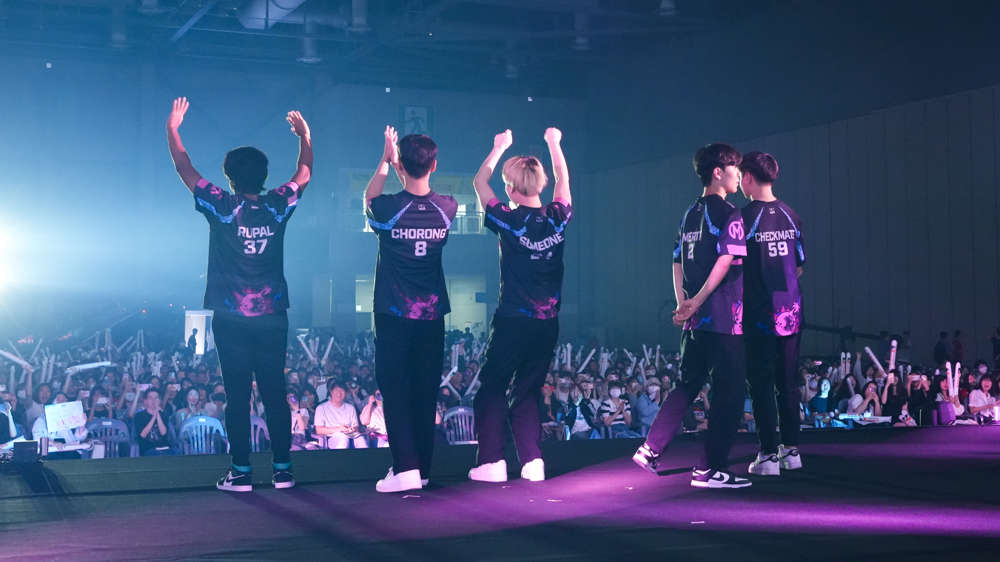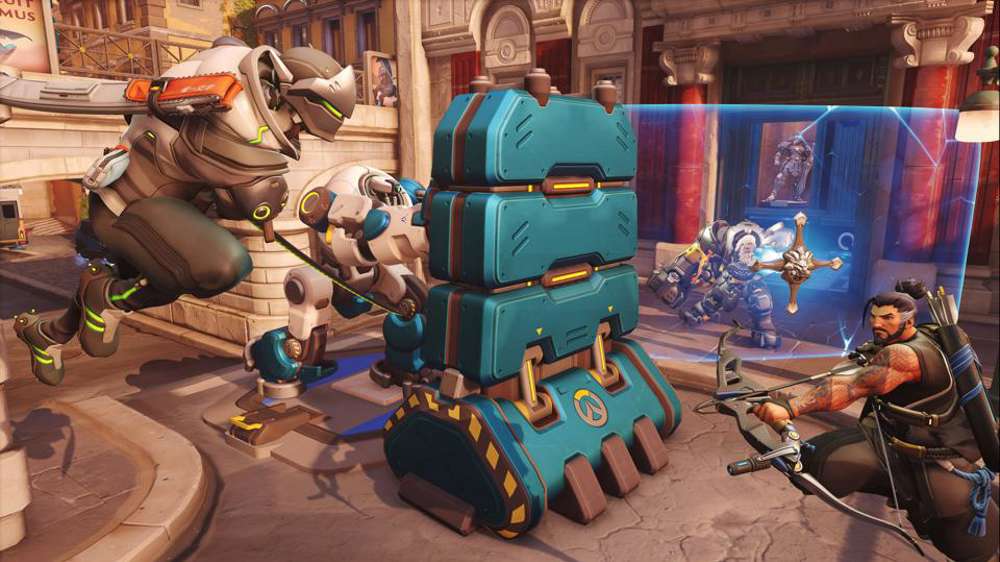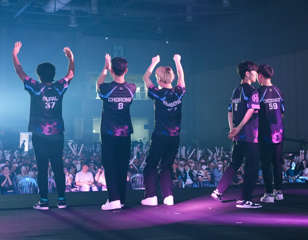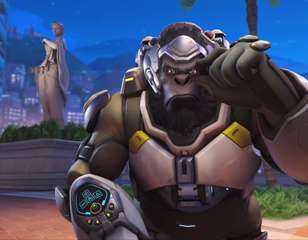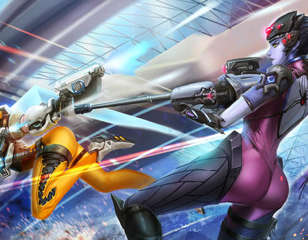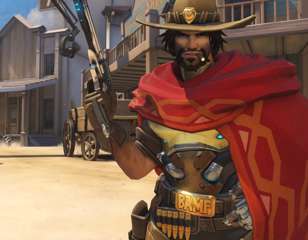How To Lose With Fleta
Why did Flash Lux struggle so hard during the APEX era?

Joseph "Volamel" Franco
15th Jan 2021 20:00

Do you ever find yourself pondering the great mysteries of life? How do I live a fulfilling life? Can you ever cook the proper amount of pasta? Why are our toes not called “feet fingers”? If questions like these intrigue you then ask yourself this; what exactly was going on with Flash Lux?
History fondly remembers them as the team that gave us the deadlift. The record remembers them as the team that manned the gates to the biggest stage in Overwatch before the Overwatch League took hold. However, what exactly plagued Flash Lux so heavily? Such an important and enigmatic team in the timeline of competitive Overwatch history deserves the spotlight, not for ridicule’s sake, but for context’s. They had the talent, they were supposed to be good enough to compete, so why did Flash Lux struggle throughout the numerous OGN’s Overwatch APEX seasons?
APEX Season 1
Flash Lux was slated to be a fairly promising, young team. Their debut roster consisted of DPS pair Kim "E1kiNo" Keun-hyung and Ham “Hamtol” Yoo Rim, tank players Kim "Weeso" Sang-woo and Lee "Pumple" Jung-hoon, as well as supports Kim "Kisu" Do Hyun and Shin "Hyeok" Jae-hyeok. The team would be placed into Group A alongside the original Rogue lineup, Afreeca Freecs Blue, and Rhinos Gaming Titan.
To set the stage, we have to remember that this is roughly four years ago, and in Overwatch terms, these players might as well have been playing a totally different game. Most theory and refinement around the ultimate economy, the use of each hero’s ultimate as a resource and a vehicle to win team fights, was poorly understood, Flash Lux included. Hyeok would often Sound Barrier aggressively to help push his Reaper into their own Graviton Surge, Kisu had very optimistic Nano Boosts, Weeso felt like he was playing hot potato most of the time with his Earth Shatters.
It was messy, to say the least.
Even just after their first match of the season, a narrow victory over Rhinos Gaming Titan, another big point you can discern is that Flash Lux is incredibly fluid in terms of their roles, almost to a fault. While this attribute of malleable roles was fairly normal, especially at this point in Overwatch history, Flash Lux takes it a bit further than perhaps they should. By the end of their first season, they had shown a dizzying level of strategies and compositions all to a vastly varying degree of success.
Hamtol was featured on Reaper, Zarya, and McCree.
Weeso seems to be the team’s Reinhardt, but will also play Zarya in early dive frameworks.
Pumple is easily the team's best Zarya, he also plays a fair bit of Roadhog and is the team's Winston player.
E1kiNo played Tracer, Mei, McCree, Genji, Reaper, Widowmaker, Winston, and Roadhog—all within one match.
If this has you confused, think about how it must have felt trying to coordinate anything with such an odd selection of players.
Throughout their matches, Flash Lux looks incredibly uncomfortable playing anything else but Reaper and Ana focused compositions. Yet, even then, they would not play your more traditional Mei/Reaper lineup that was so popular at the time. Flash Lux would toss in picks like Roadhog and McCree to try and bridge the gap. While in a vacuum they seem interesting strategically, there wasn’t much else behind the picks. Roadhog would look for aggressive hooks found through flanks and McCree would either do the same or attempt to land a Flashbang on the enemy Reinhardt. Nothing more, nothing less.
When it comes to evaluating their roster by the end of their run, it was a mixed bag on how the team performed individually. E1kiNo was an early star, but seemed to be pulled in too many different directions. As the backbone and consistent performer, Hyeok looked promising on Lucio. However, there was a massive discrepancy when it comes to main tanks when compared to Flash Lux. Weeso was easily the worst Reinhardt when compared to nearly every other starter in his group.
Funnily enough, this would be their only APEX season where Flash Lux would actually score a match win. Past this point, Flash Lux becomes a bye week, a shadow to compare the light too, and cement blocks that weigh down a truly great player.
APEX Season 2
Their sophomore season saw new talent injected into the starting lineup. E1kiNo and Hamtol parted ways with the team, and in their place, the team signed Kim “Veil” Ho-uk and Kim "Fleta" Byung-sun as their new DPS duo. Pumple would step away from the starting roster and leave Weeso and Kim “Modern” Su-hoon as the tank duo. Main support, Hyeok, would move to greener pastures and the team would sign Cho “Unis” Sun-Min. Housed within Group D this time around, Flash Lux took on the likes of RunAway, Fnatic, and KongDoo Panthera.
Entering the season, there was a sizeable amount of hype around Veil and for good reason. His Tracer and hitscan heroes were the spearheads to most of Flash Lux’s team fight wins. Oddly Fleta played most of his first season trying to keep his head above water. There were moments where he shines, but for the most part, he was locked into either Pharah or Roadhog, neither of which was much of a consistent threat.
Weeso ended up back on Reinhardt duty with odd splashes of Tracer while Modern moved back and forth from Winston to Zarya depending on the map. Again issues with Weeso’s approach slowed the team down. While he consistently played for counter Earth Shatters, you had other players being Speed Boosted in, diving behind the enemy’s shield and consistently stunning two to three people. This paired with his often wild use of Charge, put him more often than not out of position. However, the blame shouldn’t be placed solely on him.
Kisu, while painfully average in season one, really started to become a thorn in Flash Lux’s side during season two. Fight after fight, Kisu would constantly be one of the first eliminated. Be it on Ana or Mercy, he was always getting hooked or getting charged by a Reinhardt or being steamrolled by the enemy Tracer, it was becoming a problem. Now, while some of that blame can fall on other circumstances as well, which could spell out a much larger issue around the team’s direction and coaching, the frequency of his first deaths doesn’t check out.
APEX Season 2 was where some of the first real stars of South Korea began to emerge, and Flash Lux were nothing more than a pack of gazelle staring down lions. Sure, the team still had problems with their ultimate economy and coordination, but the roster itself was arguably a downgrade from their previous lineup. While the team definitely upgraded at DPS, both Fleta and Veil looked to be very promising players in their own right, their tank dilemma continued to haunt them, and now their supports started to come under fire.
Surprising no one, Flash Lux bottomed out of their group, finishing winless and only managing one map win against Fnatic. It was at this point that it became newsworthy to see Flash Lux look competitive against a team, let alone win a map.
APEX Season 3
Season three saw the exact same roster. While the world shuffled their cards and teams all across the globe improved their chances to compete—Flash Lux remained exactly the same.
Placed within Group C, the gatekeepers of the APEX era starred down the barrel of teams like LuxuryWatch Blue, CONBOX Spirit and MVP Space. Lucking into one of the easier groups in the tournament, Flash Lux should at least improve their record last season, right?
Wrong.
They didn’t win a single game, nor did they win a single map.
This was the season Fleta came alive on Genji. He and Veil both were the only saving graces for a team that looked like wet bread. However promising they both looked, with the same roster, the same issues persist. Not only was Kisu still an issue Flash Lux management had yet to solve, now Modern was thrust into the dedicated main tank role as the team’s Winston player. Quietly this problem festered and tangled itself in other avenues as well. Modern took a lot of damage; this is likely a symptom of his placement on his Jump Packs landing in the open rather than trying to mitigate damage through playing around corners where possible. This caused Weeso to invest much of his attention to mitigating, as best he could, with D.Va’s Defense Matrix. This ate away at any resources the supports could call upon if they were to be poked or pushed.
Can you see how this all ties together?
Nearing modern Overwatch, it’s frankly surprising how poorly Flash Lux was able to track their enemies' ultimates on top of being able to find consistent value with their own. You hate to kick a man when he’s down but Kisu’s Zenyatta performance, namely his Transcendence usage, time and time again is just empty. Using it aggressively, using it to attempt to save a teammate caught out, using it ahead of the enemy Dragon Blade, he just can’t catch a break. He looks woefully underprepared on the hero, and when you look at the tank performance, the team could benefit from a support pick with more healing throughput like Ana. This would allow their tanks to brawl a bit more; it would still give them a great win condition with Nano Boost and Dragon Blade, as well as using it on Modern off-serve to help him take space.
Flash Lux could be excused in the past for not having some form of coordinated proactivity, but at this point, it becomes a massive issue. Highlighted in their match against MVP Space on King’s Row, you constantly see MVP Space win fights without having to expend much in the way of resources. Contrasting that to Flash Lux, who can only find fight wins through ultimates like Dragons Blade and offensive support ultimates, you can start to piece the puzzle together.
The team lacks cohesion, that’s obvious, but they’re nothing being guided. Kisu is playing a pick he looks uncomfortable on, Weeso can’t leave Modern’s side for fear he dies instantly, and their compositions mid-map look like a patchwork of heroes thrown together, especially when it comes to DPS. There isn’t much in the way of a plan. It felt as if they were making it up as they go. However, it seemed their consistent failures had begun to take its toll on the roster.
Shortly after the end of APEX Season 3, former players and reports of some current members of the starting roster came out to discuss their experience within the team. This detailed accusations of poor coaching, internal turmoil, and just a general apathetic outlook from the league’s worst team.
APEX Season 4
The fourth and final installation of OGN’s Overwatch APEX series would see Flash Lux call upon some needed reinforcements. Long time support duo, Kisu and Unis were set aside as newcomers Kim "Shu" Jin-seo and Son "CoMa" Kyung-woo. At tank, Modern parted ways with Flash Lux as Ham "Oberon" Eun-sang joined the starting lineup. This new and vastly improved lineup would be housed in Group B alongside KongDoo Panthera, Nc Foxes, and KongDoo Uncia.
The season started with a minor DPS role change. Fleta would open up his hero pool even more while Veil would try his hand at picks like McCree and Soldier: 76. The change showed mixed success, Tracer was Veil’s best hero by far, and while Fleta could play most of the cast at a high level, Flash Lux was down a DPS threat most of the time.
Their new main tank, Oberon, gave them a push in the right direction towards the season’s start, but slightly too far. Past APEX seasons saw Flash Lux just roll over and die without trying to take fights, Oberon was very proactive, but this didn’t detract or improve their issues, it just flipped them. Instead of being the passively, uncoordinated team, they were the overly aggressive, uncoordinated team.
And then they returned to being skittish and lacked any kind of target acquisition.
Doomfist seemed to catch the eye of Flash Lux and while Fleta seemed decent enough at the pick, the team, as a whole, just were lost when it came to trying to figure out how to approach a vanilla fight. Instead of barreling down on the enemy tanks, Weeso and Veil are preoccupied, Oberon makes a short-range dive, Fleta’s trying to position, nothing ever seems to line up.
By the end of their season, namely around the time of their match with KongDoo Panthera, there seemed to be much more coordination, it wasn’t amazing, but it was a sign of life from a historically despondent team. Good enough to score a Control map win over one of APEX’s best. Oberon presented more measured aggression, Wesso felt more available for his supports, the DPS returned to their comfort picks, the team looked fairly competitive by the end—but at that point, it was over.
Flash Lux ended the APEX era with a staggering 1-11 match record and a 5-38 map record.
The lowest common denominator
To put it bluntly, Flash Lux struggled because they were not guided well. They managed to find talented players like Fleta, Veil, Shu, even Hyeok was serviceable, but good players don’t make a good team. Take, for example, the season four Nc Foxes, Pumple, E1kiNo, and Hyeok swept their former team without breaking a sweat. Think of how many other equally poor teams existed throughout the course of Overwatch history, but had a strong, central leader—be it a coach or player—and found much more success. Flash Lux ferried some notable players to successful careers; the only difference was the system they were put in.
So who really is to blame? We see the players change, and yet the results stay the same. We see former players leave for other opportunities and find success. Sure the players could be a bit better, but when you have four seasons all with relatively the same level of success where does the fault lie?
Where is any form of leadership to simplify the theory of the team? Why is a team that struggles with basic teamwork attempting to play extremely aggressive and coordinated compositions? It’s difficult to say what barriers the coaching staff had to deal with when it came to recruitment; it’s difficult to argue in good faith that opting not to change their roster for APEX Season 3 was of sound mind.
All of this returns to whoever was in Flash Lux’s front office.
If you’re still not convinced, let’s return to the Nc Foxes match. Three former Flash Lux members pair off against their old team and who is on the sidelines coaching them along. Well, it’s none other than Park "Crusty" Dae-hee. Ask yourself this; if Crusty were to have coached this team, how do you think they’d perform? If Crusty and Fleta were to have joined forces, do you think they’d win a match?
Again, players can only be as good as their systems—and Flash Lux’s was rotten from the start.
Images via Blizzard Entertainment

About The Author
Joseph "Volamel" Franco
Joseph “Volamel” Franco is a Freelance Journalist at GGRecon. Starting with the Major League Gaming events 2006, he started out primarily following Starcraft 2, Halo 3, and Super Smash Bros. Melee, before transitioning from viewer to journalist. Volamel has covered Overwatch for four years and has ventured into VALORANT as the game continues to grow. His work can also be found on sites like Esports Heaven, HTC Esports, and VP Esports.
